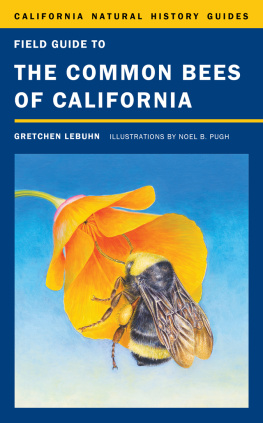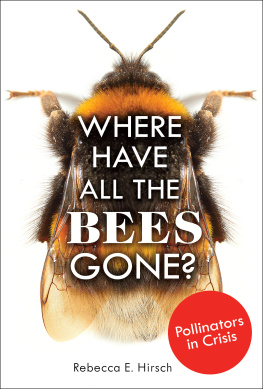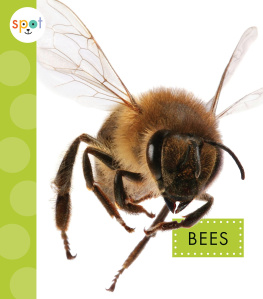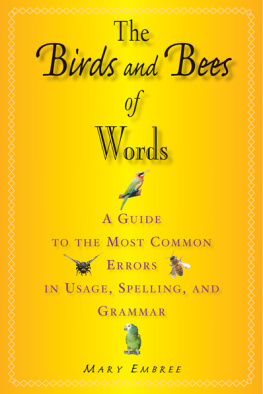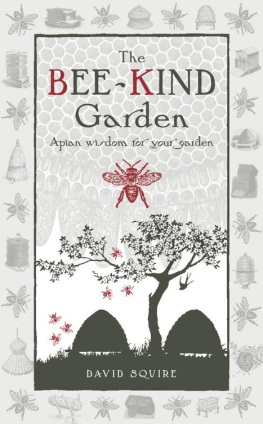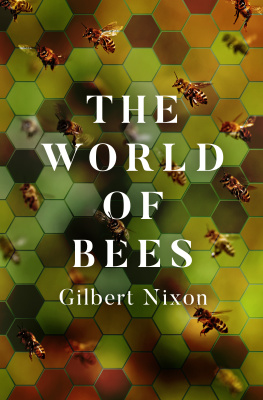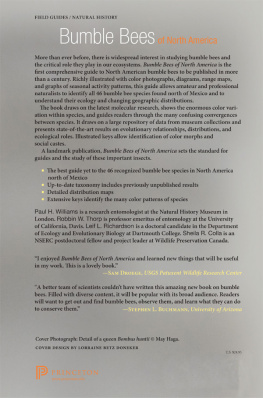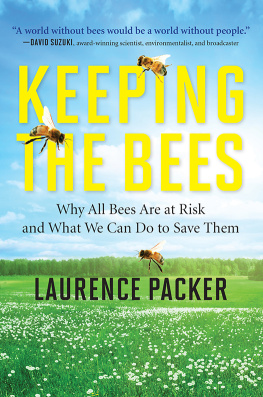
CALIFORNIA NATURAL HISTORY GUIDES

FIELD GUIDE TO THE
COMMON BEES OF CALIFORNIA
CALIFORNIA NATURAL HISTORY GUIDES
Phyllis M. Faber, General Editor

Field Guide to the
COMMON BEES
of California
Including Bees of the
Western United States
Text by
Gretchen LeBuhn
Illustrations by
Noel B. Pugh

UNIVERSITY OF CALIFORNIA PRESS
BerkeleyLos AngelesLondon
Dedicated to Jerome G. Rozen Jr.
University of California Press, one of the most distinguished university presses in the United States, enriches lives around the world by advancing scholarship in the humanities, social sciences, and natural sciences. Its activities are supported by the UC Press Foundation and by philanthropic contributions from individuals and institutions. For more information, visit www.ucpress.edu.
California Natural History Guide Series 107
University of California Press
Berkeley and Los Angeles, California
University of California Press, Ltd.
London, England
2013 by The Regents of the University of California
Library of Congress Cataloging-in-Publication Data
LeBuhn, Gretchen, 1961.
Field guide to the common bees of California : Including Bees of the Western United States / text by Gretchen LeBuhn ; illustrations by Noel B. Pugh.
pagescm
Includes index.
ISBN 978-0-520-27283-5 (cloth : alk. paper) ISBN 978-0-520-27284-2 (pbk. : alk. paper)
eISBN 9780520956889
1. Bees CaliforniaIdentification.I. Title.
QL567.1.U6L43 2013
595.799dc232013003751
Manufactured in China
20 19 18 17 16 15 14 13
10 9 8 7 6 5 4 3 2 1
The paper used in this publication meets the minimum requirements of ANSI/NISO Z39.48-1992 (R 1997) ( Permanence of Paper ).
Cover image: Bee and poppy. Paintings by Noel B. Pugh.
The publisher gratefully acknowledges the generous contributions to this book provided by the Gordon and Betty Moore Fund in Environmental Studies.
CONTENTS
PREFACE
Why a Guide to Bees?
From childhood on, the sight of bees visiting flowers is part of our experience of the natural world. We marvel at their industry and the mystery of their travels from flower to flower and flower to hive. The scientific study of bees has revealed that bees are an essential part of healthy ecosystems. Many plants, including important crop plants, depend on the pollination they provideby carrying the pollen that bees use for food from flower to flower, bees ensure that flowers receive ample pollen for fertilization and seed set. There is growing evidence that many populations of bees are declining, and conservation of bees and other pollinators is a growing concern. Using this guide to identify some of the common groups of bees in California is a satisfying challenge, and it is my hope that the study of bees at any level can provide an excellent point of departure into the study of the bond between plants and pollinators and involvement in pollinator conservation.
This guide is meant to introduce the nonprofessional to the fascinating biology of bees and to give you some tools for beginning to know the key genera of bees. By learning about bees at this level, you can know a tremendous amount about the particular biology of any bee you catch, since bees in the same genera often share nesting habits and are often similar in their degree of specialization on flowers. While we have focused on California bees, the characteristics of the genera included in this introduction can be applied across the United States and Canada in most cases. We do not provide a guide to the species of bees except for the Guide to Some of the More Common Bumble Bees of California. Bees are extraordinarily difficult to identify to the level of species, and even for scientists who specialize in knowing bees, identifying our California bees to the species level is a challenge. If you are interested in learning more about identification, we have provided a list of Key Readings and Key Web Resources in the Resources section at the end of the book.
How to Use This Book
This book is directed at helping you learn about the common genera of California bees. I have chosen to introduce the genera of bees because bees are significantly harder to identify at both the family level and the species level. The taxonomy follows The Bees of the World by Charles Michener (2007). While many species have very restricted ranges, most of the genera covered in this book are found across all of California, and many across the whole United States. I have, therefore, chosen not to include distribution maps. Excellent distribution maps for California species can be found on the website for Discover Life at www.discoverlife.org.
I have provided two guides in this book. In the Bee Family and Genus Accounts, you will find a Key of Basic Bee Characteristics that will allow you to distinguish a few genera with easily discernible traits. Then, at the end of the book, you will find Appendix 2, Key to Females of Each Genus Included in the Book, which provides a matrix for distinguishing among the genera. Using it, you can fairly quickly narrow down the genera by simply determining whether the bee is larger or smaller than a worker honey bee, the bees color, and whether the bee has external patterning. Then, you can look at the genus account to narrow it down further. In many cases, the technical description in the genus account will require that you look at the bee under magnification to see the critical characteristics that are used to identify that genus of bees.
Acknowledgments
I would like to thank Jerry Rozen, Rob Brooks, Robbin Thorp, Terry Griswold, Charles Michener, Jim Cane, Steve Buchmann, Bob Minckley, James Thomson, Laurence Packer, Bryan Danforth, and the many students of the Southwestern Research Stations Bee Course for all they have taught us about bees. The genus accounts were developed using the resources on the Discover Life website, which owes a huge debt to John Ascher. Additional recognition goes to John Ascher, who has compiled and made available so much information about the distribution and taxonomy of bees. Special recognition goes to Sam Droege for all he has done to make collecting bees easier and for contributing the key to bees in Appendix 2. The pronunciations used in this guide were developed by Sam Droege. We would also like to recognize the major contributions of Mace Vaughan and Lisa Schonberg of the Xerces Society, who helped draft early versions of some of the genus accounts. Lynn Lozier and Mike Mesler provided excellent advice on how to improve the manuscript. Leah Larkin, Fred Bove, and Mark Reynolds helped with editing of the manuscript. Much of the information on California genera came from the magnificent catalog of California bees by Andy Moldenke and Jack Neff .
AN INTRODUCTION TO BEES

What Are Bees?
Anyone who has spent a lovely warm morning in a garden in spring has shared company with a bee. From a farm in the Central Valley to a community garden in the center of Los Angeles, bees are busy buzzing around, visiting flowers, gathering resources for their off spring, and in the process, transferring pollen from flower to flower.
Next page
